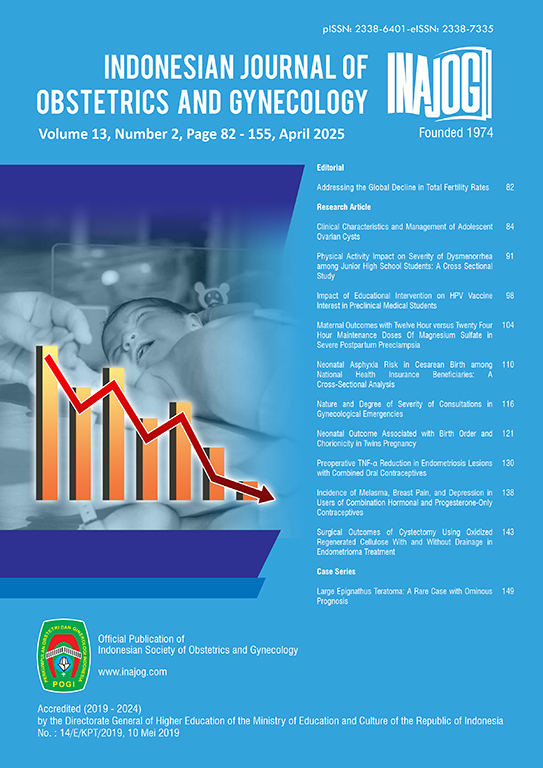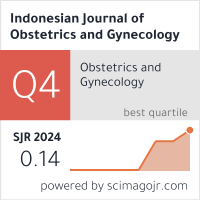Neonatal Outcome Associated With Birth Order and Chorionicity in Twin Pregnancy
Abstract
Objectives: The objective of this study is to examine the neonatal outcomes of twin pregnancies based on the difference of chorionicity and order of delivery.
Methods: An observational cross-sectional study was done among all women with >24 completed weeks gestation having twin pregnancies in the Department of Obstetrics and Gynaecology of Dr. Soetomo General Hospital and Universitas Airlangga Hospital, Surabaya, Indonesia in 2023.
Results: 49 twin from 1638 birth (2.99%) were recruited for the study. The MC groups had a higher prevalence of preterm birth <37 weeks (83.3 vs 53.8%), preterm birth <34 weeks (52.8 vs 15.4%), VLBW (25 vs 7.7%), ELBW (25 vs 15.4%), low Apgar scores at 5th minutes (50 vs 15.4%), admission to NICU (66.7 vs 15.4%), RDS (41.7 vs 7.7%), early neonatal death (33.3 vs 7.7%), and perinatal death (44.4 vs 15.4%) [p<0.05]. In relation to birth order, there were no significant difference in all neonatal outcomes, except the higher prevalence of lower Apgar scores in 1st (75 vs 50%) and 5th minutes (50 vs 19.4) in the second delivered MC twin (p=0.05). Out of the 98 twin babies, there were a total of 32 perinatal deaths (32.65%), consisting of eight stillbirths and twenty-four neonatal deaths.
Conclusions: Chorionicity and birth order were influenced by the neonatal outcomes of twin pregnancies. It is important to manage twin pregnancy in specialized or tertiary care center hospital.
Downloads
Copyright (c) 2025 Indonesian Journal of Obstetrics and Gynecology

This work is licensed under a Creative Commons Attribution-NonCommercial-ShareAlike 4.0 International License.













